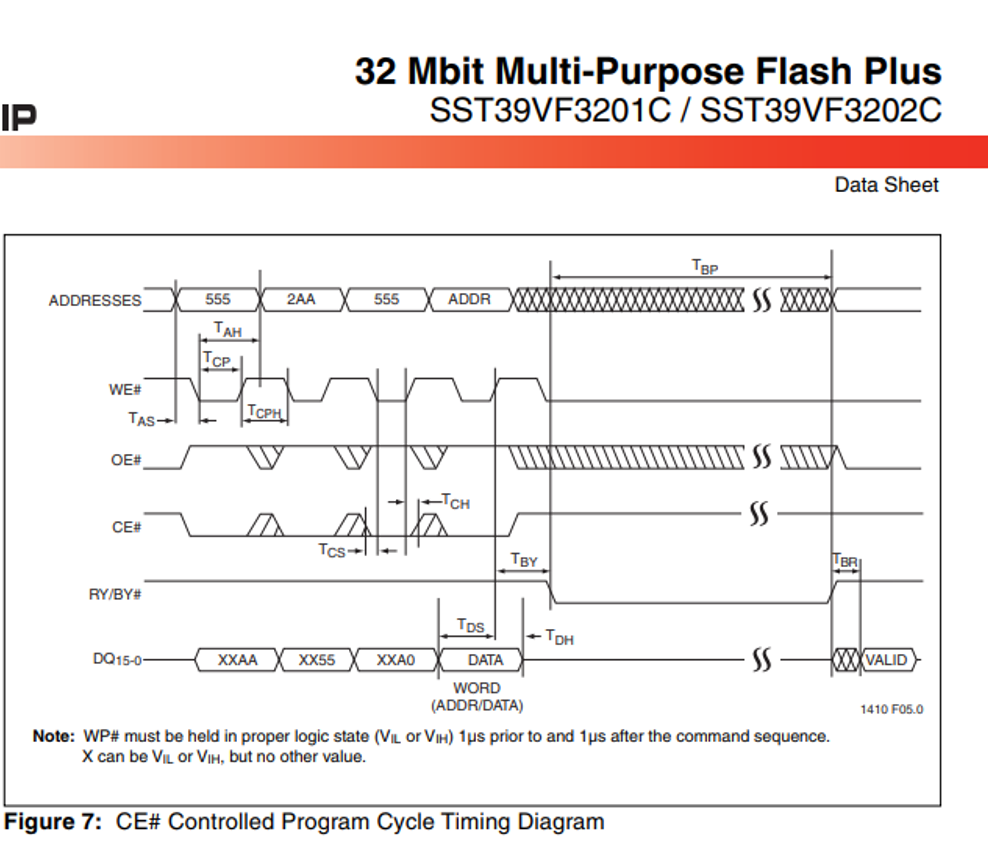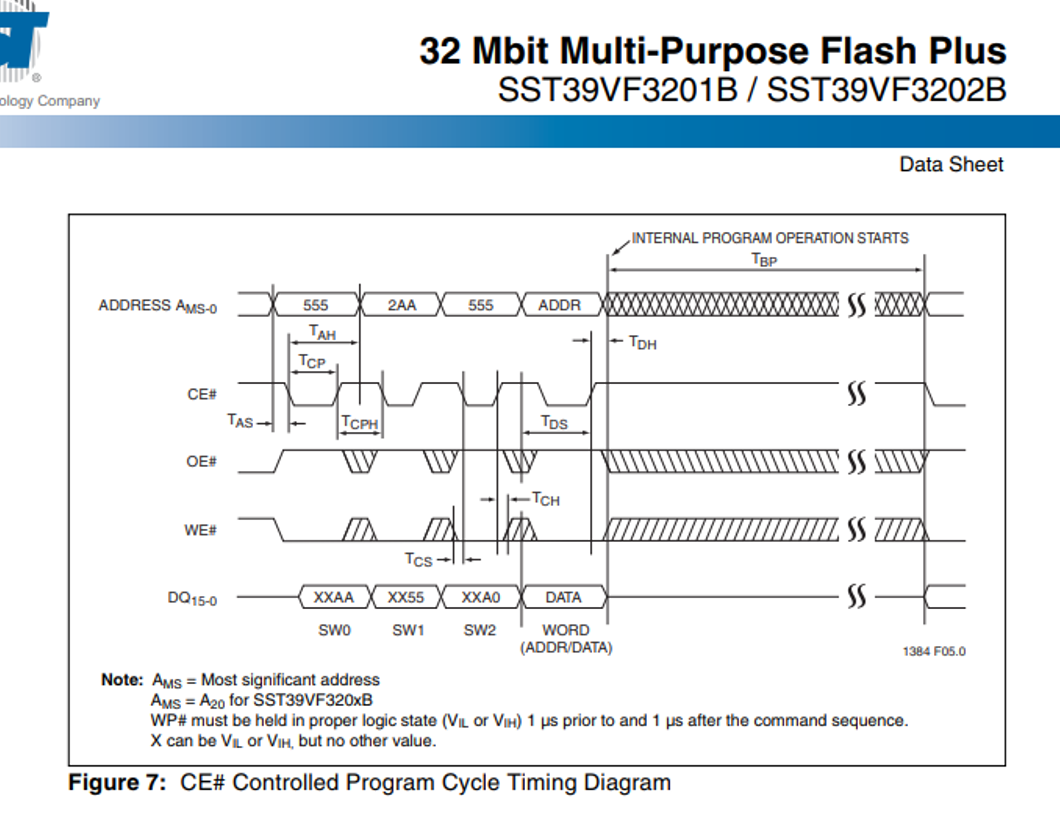Other Parts Discussed in Thread: OMAP-L138
Hi E2E Forum,
I have a customer that is currently using a TMS320C6748 and have been using this part for a number of years with the Micron M29DW323DB. The Micron part has gone obsolete, and a compatible drop-in replacement part appears to be the Microchip SST39VF3201C.
However, when using sfh_OMAP-L138.exe to boot-load their image onthe Microchip flash, the boot-loader starts fine, can erase the flash, but when writing the NOR flash it fails.
Target: Erased through 0x603A0000
Target: Erase Completed
Target: Timout occurred.
Target: Normal write failed.
Target: NOR Write Failed…Aborting!
Tarhet: ERROR:Writing NOR failed.
Target: Fail
Target: Fail
Has anyone had this issue before and resolved it? Why is the boot-loader timing out and what Is it waiting for?
Thanks,
Mike



